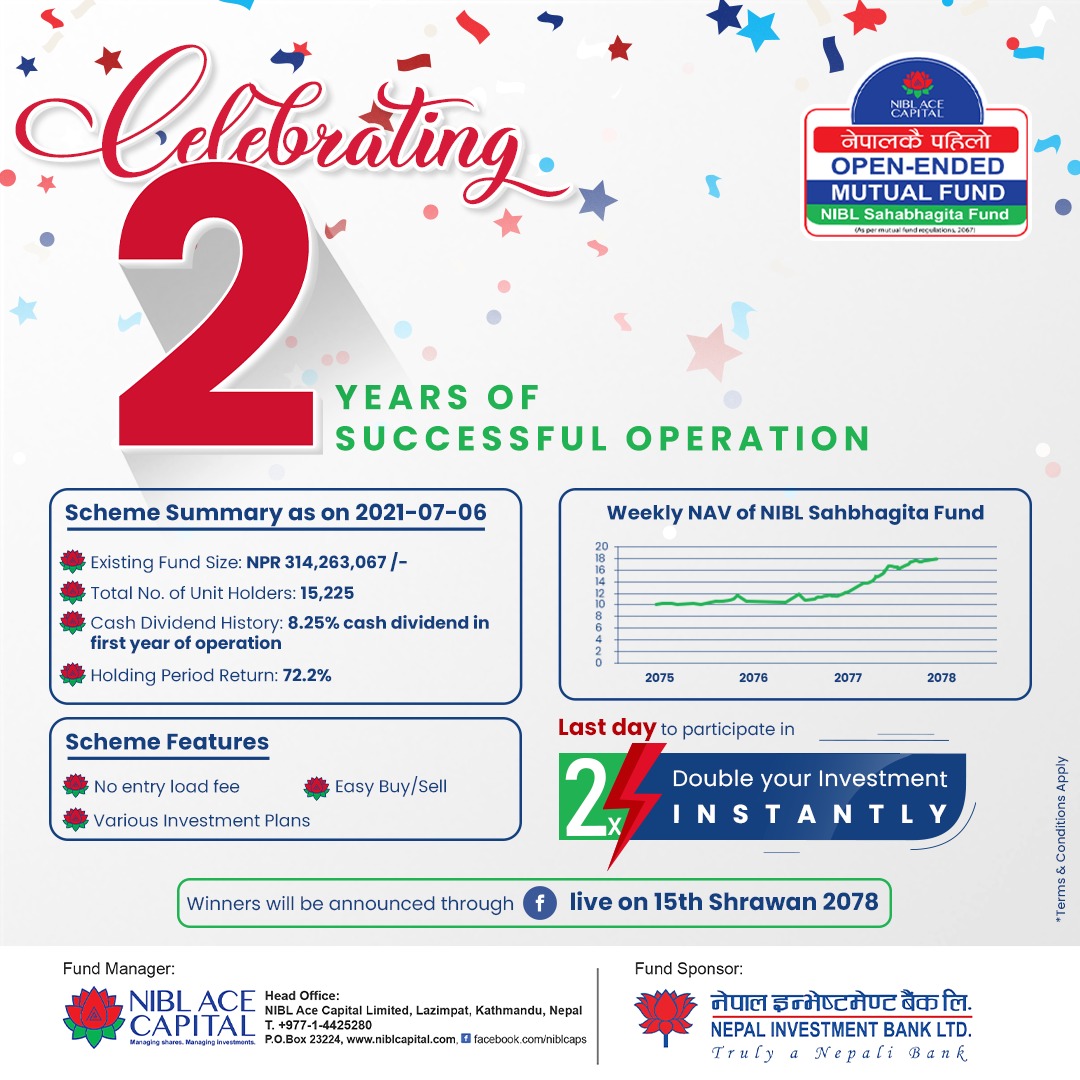काठमाडौं । एनआइबिएल सहभागिता फण्डले संचालनको दोस्रो वर्ष सफलतापूर्वक पुरा गरी तेस्रो वर्षमा प्रवेश गरेको छ । नेपाल इन्भेष्टमेन्ट बैंक लिमिटेड कोष प्रबद्र्धक र एनआईबिएल एस क्याप्टिल लिमिटेड योजना व्यवस्थापक तथा डिपोजिटरी रहेको एनआईबिएल म्युचुअल फण्ड अन्र्तगत संचालित यस योजनाले नेपालकोे पूँजीबजारमा खुलामुखी योजानाको परिचय दिन सफल भएको छ ।
यस खुलामुखी योजानाले संचालनको पहिलो आर्थिक वर्ष २०७६÷२०७७ मा नै आफ्ना इकाईधनीहरुको लागि ८.२५ प्रतिशत नगद लाभांश समेत प्रदान गर्न सफल भएका थिए । १० रुपैयाँ अंकित मूल्य रहेको यस योजानाको २०७८ साल असार २२ गतेको दिनको तथ्याङ्क अनुसार प्रति इकाई खुद मूल्य १७ रुपैयाँ २१ पैसा पुगेको छ भने योजानाको आकार ३१.४२ करोड पुगेको छ ।
योजना व्यवस्थापक, एनआईबिएल एस क्यापिटल लिमिटेडले एनआइबिएल सहभागिता फण्डको दोस्रो वार्षिकोत्सवको उपल्क्षयमा लगानीकर्ताहरुलाई आफ्नो लगानीलाई तत्काल दुई गुणासम्म बृद्धि गराउने योजाना गत आइतबार असार २० गते देखि आज बिहीबार असार २४ गते सम्मको लागि ल्याएको थियो ।
यस योजनामा हालसम्म सहभागि नहुनु भएका लगानीकर्ताहरुलाई आज योजानाको अन्तिम दिन अपह्रान्न ३ बजे सम्ममा सहभागि हुन समेत एनआईबिएल एस क्याप्टिल लिमिटेडलले आग्रह गरेको छ ।
यस योजनाको नतिजा २०७८ साल श्रावण १५ गते गोलाप्रथाद्वारा फेसबुक लाइभ मार्फत गरिनेछ र योग्य सहभागिहरुबाट २० जना विजेता घोषणा गरिनेछ र पूर्व निर्धारित नियम र सर्तहरु अनुसार पुरस्कार वितरण गरिनेछ ।
थप जानकारीको लागि, एनआईबिएल एस क्यापिटल लिमिटेडको वेवसाईट http://www.niblcapital.com तथा मुख्य कार्यलय फोन ०१४४२५२८० मा सम्पर्क गर्न सकिने छ ।
























